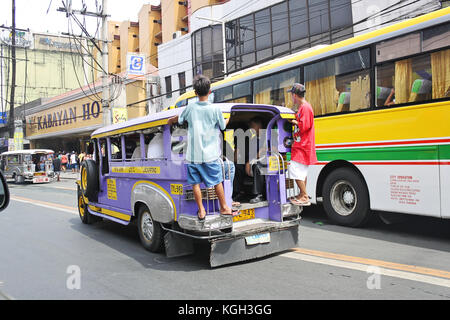Budget-friendly Transit Advertising Philippines for Brand Recognition
Budget-friendly Transit Advertising Philippines for Brand Recognition
Blog Article
Exactly How Transportation Marketing Can Transform Public Transport Spaces Into Dynamic Marketing Operatings Systems
Transit advertising holds considerable potential to redefine mass transit areas into vibrant marketing platforms that inform and involve. By making use of ingenious layouts such as electronic display screens and interactive booths, brands can not just get to a diverse audience but also boost the general traveler experience. This method develops an one-of-a-kind opportunity for brand names to attach with customers in a setting that is often neglected. As we explore the complex advantages and progressing strategies of transit advertising, it elevates the inquiry of just how this transformation could redefine our interactions with both brand names and the metropolitan atmosphere.
Benefits of Transit Advertising

In addition, transit advertising is highly cost-efficient contrasted to conventional media. It permits marketers to accomplish high perceptions at lower costs, making best use of return on investment. The captive target market of travelers gives an opportunity for brands to share their messages to people that are typically receptive throughout their travel times.
Moreover, the dynamic nature of transit advertising and marketing allows campaigns to be updated regularly, ensuring that messaging stays appropriate and timely. This versatility can be critical in replying to market fads or marketing events, maintaining the brand name top-of-mind for customers. Lastly, the prevalent visibility of transit advertising adds to brand recall; duplicated direct exposure within familiar travel contexts enhances brand name recognition and fosters customer loyalty, eventually boosting and driving sales brand credibility.
Sorts Of Transportation Advertising
Public transport systems supply different formats for advertising, each accommodating different advertising and marketing strategies and target market interaction techniques. One prominent type is external bus and train covers, which cover the whole lorry and create a mobile billboard impact, enabling for high presence in city settings. These covers can capture focus as they traverse busy streets, getting to a diverse target market.
Another prominent style is interior marketing, that includes posters, electronic screens, and advertisements on transit seats. These placements involve travelers throughout their trip, enhancing brand messaging in a confined room. Digital shows, specifically, provide the advantage of vibrant content, allowing advertisers to update messages in real-time.
Terminal advertising and marketing is additionally substantial, including posters, banners, and interactive kiosks within transit terminals. These advertisements take advantage of foot web traffic and can target certain demographics based upon area.
Last but not least, advertising collaborations with transportation authorities can bring about distinct projects, such as themed transit experiences or events, boosting the general engagement with travelers. Each sort of transportation advertising provides unique advantages, permitting brands to tailor their approach to efficiently reach their target market within the public transportation ecosystem.
Involving Commuters Efficiently
Commuters are increasingly swamped with marketing messages during their daily trips, making it necessary for brands to engage them in ingenious means. To record focus in this jampacked room, advertisers need to prioritize imagination and significance. Utilizing attractive visuals and succinct messaging can dramatically boost the probability of interaction.
Interactive aspects, such as QR codes or enhanced truth features, can also transform fixed advertisements right into immersive experiences, promoting a deeper connection with the audience. Brand names need to concentrate on resolving commuters' rate of interests and demands, tailoring messages to reverberate with their way of life, whether via promos for neighborhood organizations or services developed to enhance their travelling experience.
Moreover, timing plays a crucial duty; purposefully placing advertisements throughout optimal travelling hours can maximize presence and influence. Engaging commuters effectively additionally includes leveraging social media sites combination, enabling guests to share their promotions or experiences directly from transportation systems, consequently amplifying brand name reach.
Basically, efficient involvement rests on recognizing the traveler journey and producing engaging, interactive, and appropriate advertising experiences that not just record focus however additionally drive action and loyalty. By doing so, brand names can transform public transportation right into a dynamic advertising and marketing system that reverberates with its target market.

Measuring Marketing Influence
Exactly how can brand names properly assess the efficiency of their advertising and marketing campaigns in transportation atmospheres? Measuring the effect of transit marketing calls for a diverse method that incorporates qualitative and quantitative metrics. One prevalent approach is tracking interaction with mobile analytics, where brands can examine foot website traffic patterns and application communications in the past, throughout, and after campaigns.
Studies can provide valuable understandings right into brand name recall and customer sentiment, allowing brands to assess just how well their messages reverberate with travelers. Furthermore, checking social networks involvement related to specific campaigns can disclose changes in public assumption and brand name conversation.

Additionally, working together with transit firms can enhance measurement accuracy, as they usually possess in-depth market information on ridership patterns. By integrating these techniques, brand names can create a thorough understanding of their marketing performance, ensuring that their campaigns not only get to why not try this out yet additionally impact their target audiences successfully.
Future Fads in Transit Advertising
A substantial shift is prepared for en route advertising as technical improvements and transforming consumer habits reshape the landscape. Transit Advertising Philippines. The my latest blog post integration of interactive media and digital display screens is expected to enhance engagement, enabling brands to supply vibrant web content that reverberates with diverse audiences. As public transport systems accept smart modern technology, marketers will take advantage of real-time information analytics to tailor messages based on guest demographics and behaviors
Moreover, boosted fact (AR) is positioned to transform the method travelers communicate with ads. By offering immersive experiences, AR can transform an ordinary journey right into an engaging story that catches attention and fosters brand name loyalty. This innovation will likely motivate marketers to create more experiential campaigns that drive consumer communication.
Sustainability is one more critical trend affecting transportation marketing. As ecological awareness grows, brand names will increasingly look for to straighten with environment-friendly methods, utilizing sustainable products and promoting environment-friendly initiatives within their campaigns.
Verdict
To conclude, transportation advertising provides significant advantages by boosting brand name presence and engaging a restricted target market. With different formats, such as exterior covers and digital screens, it changes mass transit into a lively marketing system. Reliable engagement techniques and robust measurement strategies additionally enhance its impact. As patterns develop, the potential for cutting-edge interactions between travelers and brand names is poised to grow, making certain that transit advertising stays an essential element of contemporary advertising methods.
Transit advertising and marketing holds considerable capacity to redefine public transportation spaces into lively advertising and marketing platforms that engage and notify. The prevalent existence of transportation advertising contributes to brand name recall; repeated direct exposure within familiar traveling contexts enhances brand my sources name recognition and promotes customer commitment, eventually driving sales and improving brand name online reputation.
How can brands properly examine the efficiency of their marketing campaigns in transit settings?In conclusion, transportation marketing supplies significant advantages by improving brand exposure and involving a restricted audience. Transit Advertising Philippines. As fads advance, the potential for ingenious communications in between travelers and brands is positioned to grow, making certain that transit marketing stays an essential element of contemporary advertising and marketing techniques
Report this page